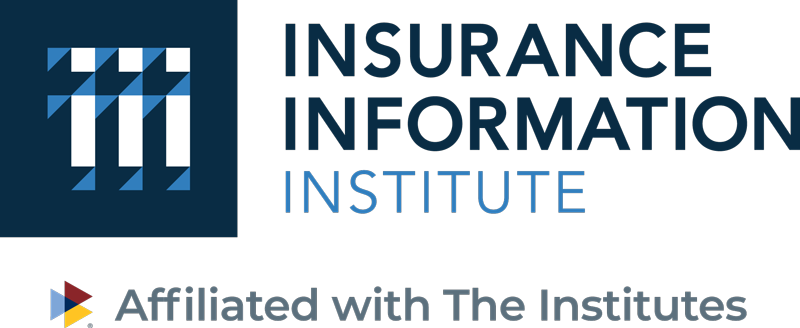
The weather gauge
Driving extreme weather awareness and resilience forward
properties.trackTitle
properties.trackSubtitle
+2,000
people across the US surveyed
Thunderstorms. Floods. Tornadoes. Hurricanes. These are just some of the severe weather events that are affecting regions of the US with greater frequency and severity, and the risks impending on the horizon are less predictable than ever. But what does the average homeowner really know about the potential impact of these events? And do they know how to better prepare their homes to withstand such events?
As a leader in the reinsurance industry, Munich Re* plays a pivotal role in the global effort to adapt to extreme weather by putting risk mitigation measures in place. We are committed to educating all stakeholders to understand the magnitude of potential loss, closing the protection gap, and making our communities more resilient.
In collaboration with the Insurance Information Institute (Triple-I), our “2023 Q2 Consumer Survey Homeowners Perception of Weather Risk” asked more than 2,000 people across the US to “gauge” what the average consumer understands about extreme weather and what measures they have taken to better to protect their homes and families.
Key findings from the survey confirm some consumers lack knowledge of their potential to be impacted by severe weather events and emphasize the need for educating all stakeholders about their role in helping to build more resilient communities.
Perception vs. reality of weather risks
Extreme weather events can strike anywhere, at any time. In the last five years, 90 weather events occurred in the US — each resulting in over a billion dollars in damages.1 In the first nine months of 2022 alone, the US experienced 18 separate billion-dollar weather and climate disasters.2
Preparedness starts with education: Everyone needs to recognize the urgency to adapt to extreme weather now. By acknowledging the potential risks, they can take proper steps to mitigate them.
Munich Reinsurance America., Inc. ("Munich Re US") offers community-based solutions to help bridge the knowledge gap, encompassing risk education to risk transfer. Our solutions include education and training on extreme weather and its impacts, tools and data analytics that show the changing risk landscape, public private partnerships to strengthen community preparedness, and innovative risk transfer solutions.
Defining an insurance protection gap
The good news: Most homeowners (88%) do have homeowners insurance, due to mortgage lender requirements. More alarming is the remaining 12% who do not have coverage.
In our survey, 48% of uninsured homeowners have a household income of less than $40,000 per year. At lower income levels, homeowners insurance may be viewed as a discretionary purchase. However, extreme weather does not discriminate by income, and low-income homeowners remain at risk. This insurance protection gap equals billions of dollars in losses each year. In 2022, only $94 billion of the $148 billion economics losses due to natural disasters in the US were insured, leaving a gap of $54 billion in uninsured losses.
Weather risk keeping homeowners up at night
Protecting homeowners from rising flood waters
Although homeowners correctly identified thunderstorms as the top weather risk, most do not realize the level of risk and destructive power of flood waters alone. According to FEMA, flooding is the most common natural disaster in the US. Between 1996 and 2019, 99% of US counties were impacted by a flooding event.5
Anywhere it can rain, it can flood, yet only 22% of the homeowners in our survey believe they are at risk of being impacted by this destructive peril.6
Additionally, many consumers are not aware that flood coverage must be added or endorsed onto their homeowners insurance policy — it is not covered by the basic policy itself.
Our survey revealed that of those who perceive they are at risk of flooding, 78% have purchased flood insurance. This points to the fact that it is critical to educate consumers not only about flood risk itself, but also about obtaining proper coverage for this risk.
Enhancing resiliency is a team effort
Purchasing proper insurance coverage is just one step homeowners can take to help create a resilient home. While a homeowner cannot predict or control severe weather events, they can play a crucial role in protecting their home against them.
Across the US, 40% of homeowners report they have taken steps to better protect their home, however, 60% say they have not completed any steps to make their home more resilient.
Respondents were asked about resilience-related home improvements they have made to protect their home. Half of the respondents have made some type of resilience-related improvements, while 50% have not.
The top two home improvements cited in the survey were:
- Installing smart sensors and cameras to monitor for damages
- Using new building techniques to fortify roof, windows, doors, and walls
As part of the team, insurance providers should educate homeowners about the importance of resilience and the measures they can take to better protect their homes and ultimately reduce losses. Along with the insurance industry, policymakers, homeowners, and communities can all take steps to help reduce the impact of extreme weather events. Mitigation efforts can help protect lives, improve safety, prevent property loss, and decrease disruption of daily life. Society can realize a monetary return on this investment in resiliency. According to the National Institute of Building Sciences8:
- Mitigation saves $13 per $1 invested
- Adopting latest building code requirements saves $11 per $1 spent
Learn more about our solutions
Inexpensive ways homeowners can play their part
63%
Willing to spend up to $5k
Willingness to spend for mitigation efforts
| $1 to $2,500 | 40% |
| $2,501 to $5,000 | 23% |
| $5,001 to $10,000 | 13% |
| $10,001 to $25,000 | 7% |
| $25,001 or more | 3% |
| Unwillingness to spend | 14% |
| Total | 100% |
Maintenance and improvement activities under $5,000
Munich Re is committed to driving extreme weather awareness and resilience forward.
*Munich Re (includes all subsidiaries of Münchener Rückversicherungs-Gesellschaft Aktiengesellschaft in München)Executive Exchange
Triple-I CEO Sean Kevelighan, and Munich Re America EVP Tim Brockett, discuss the results of the 2023 consumer survey of homeowners perception of weather risks.
Get the competitive edge with our turnkey Inland Flood endorsement.
Frequently asked questions
Do consumers understand their potential for being impacted by severe weather events?
Which weather event or natural catastrophe is most likely to damage homes?
Do homeowners understand their role in helping to build more resilient communities?
Is flood damage covered in standard homeowner’s insurance policies?
Does Munich Re US offer flood insurance solutions to help address inland flood?
Download full report
The Insurance Information Institute name, as reflected on this website, is used with consent.

Experts




Solutions
Related links
Footnotes:
1 National Centers for Environmental Information. Billion-Dollar Weather and Climate Disasters. Retrieved April 20, 2023, from https://www.ncei.noaa.gov/access/billions/events/US/2018-2022?disasters
2 National Oceanic and Atmospheric Administration. U.S. hit with 18 billion-dollar disasters so far this year. Retrieved April 20, 2023, from https://www.noaa.gov/news/us-hit-with-18-billion-dollar-disasters-so-far-year
3 National Weather Service. Thunderstorm Hazards. Retrieved April 20, 2023, from https://www.weather.gov/key/tstmhazards
4 NatCatSERVICE, Munich Re, retrieved 7/13/23
5 FEMA. Mapping the risk – Flood map modernization. Retrieved April 20, 2023, from https://www.fema.gov/pdf/about/regions/regionv/faq_east_stlouis.pdf
6 FEMA. FEMA’s Community Rating System Program Rewards Flood Risk Reduction. Retrieved April 20, 2023, from https://www.fema.gov/press-release/20210318/femas-community-rating-system-program-rewards-flood-risk-reduction
7 Insurance Information Institute. Spotlight on: Flood insurance. Retrieved April 20, 2023, from https://www.iii.org/article/spotlight-on-flood-insurance
8 National Institute of Building Sciences. Mitigation saves up to $13 per $1 invested. Retrieved April 20, 2023, from https://www.nibs.org/files/pdfs/ms_v4_overview.pdf









